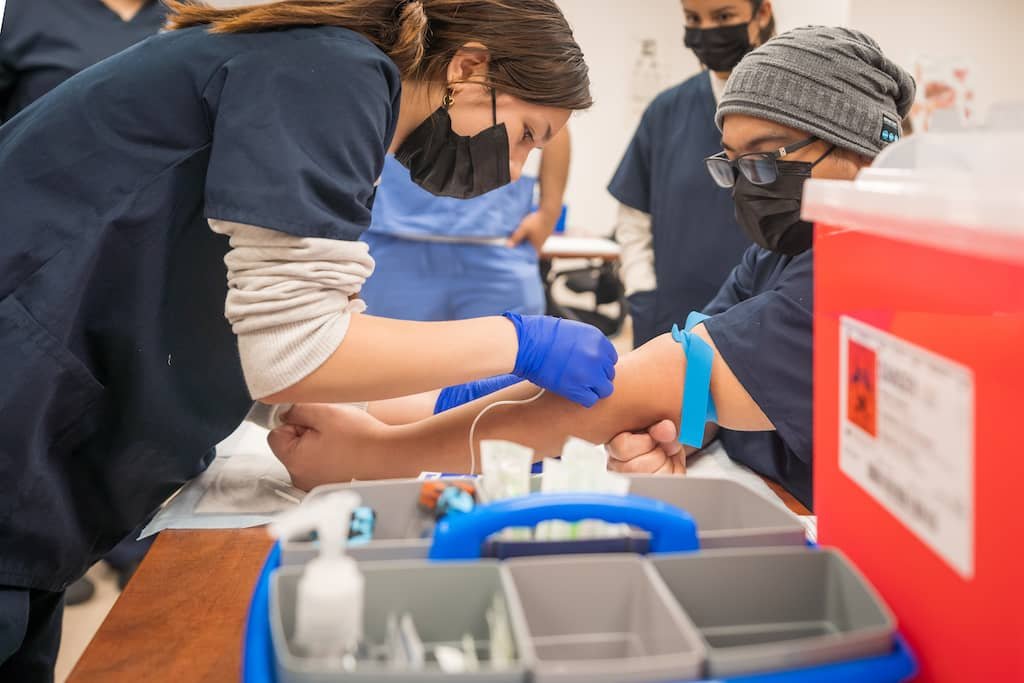Strategies for Addressing Shortages in Medical Equipment and Supplies in US Hospitals
Summary
- Hospitals in the United States are implementing various strategies to address shortages in medical equipment and supplies.
- Some of these strategies include inventory management systems, collaboration with suppliers, and seeking alternative sources for essential supplies.
- The Covid-19 pandemic has further highlighted the importance of effective Supply Chain management in healthcare facilities.
Introduction
In recent years, hospitals in the United States have been facing challenges related to shortages in medical equipment and supplies. These shortages can have a significant impact on patient care, staff safety, and overall operations of healthcare facilities. In response to these challenges, hospitals are implementing various strategies to address shortages and ensure that they have the necessary equipment and supplies to provide high-quality care to patients. This article will discuss some of the strategies that hospitals in the United States are using to manage their Supply Chain and address shortages in medical equipment and supplies.
Inventory Management Systems
One of the key strategies that hospitals are using to address shortages in medical equipment and supplies is implementing advanced inventory management systems. These systems help hospitals to track the availability of equipment and supplies in real-time, identify shortages or potential shortages, and reorder items as needed. By having a better understanding of their inventory levels and usage patterns, hospitals can prevent stockouts and ensure that they have an adequate supply of essential items on hand.
Benefits of Inventory Management Systems
Implementing inventory management systems offers several benefits to hospitals, including:
- Improved efficiency: By automating the inventory management process, hospitals can reduce the time and resources required to track and manage their supplies.
- Cost savings: By minimizing excess inventory and reducing the risk of stockouts, hospitals can save money on storage costs and emergency orders.
- Enhanced patient care: Ensuring that hospitals have the necessary equipment and supplies on hand allows them to provide timely and effective care to patients.
Collaboration with Suppliers
Another important strategy that hospitals are using to address shortages in medical equipment and supplies is collaborating closely with their suppliers. By establishing strong relationships with suppliers, hospitals can communicate their needs more effectively, receive timely updates on product availability, and negotiate favorable terms for pricing and delivery. This collaboration can help hospitals to anticipate and address potential shortages before they become critical.
Benefits of Collaboration with Suppliers
Collaborating with suppliers can offer hospitals several advantages, including:
- Priority access to supplies: By working closely with suppliers, hospitals can receive priority access to scarce or high-demand items.
- Regular communication: Establishing open lines of communication with suppliers allows hospitals to stay informed about potential shortages and upcoming product releases.
- Customized solutions: Suppliers can work with hospitals to develop customized solutions to address specific Supply Chain challenges or requirements.
Seeking Alternative Sources
In addition to implementing inventory management systems and collaborating with suppliers, hospitals in the United States are also seeking alternative sources for essential medical equipment and supplies. This may include exploring new suppliers, diversifying their Supply Chain, or investing in local manufacturing capabilities. By diversifying their sources of supply, hospitals can reduce their reliance on a single supplier and minimize the risk of shortages due to disruptions in the global Supply Chain.
Benefits of Seeking Alternative Sources
Seeking alternative sources for medical equipment and supplies can provide hospitals with several benefits, such as:
- Increased resilience: Diversifying sources of supply can help hospitals to build resilience against potential disruptions, such as natural disasters or political instability.
- Cost-effectiveness: Exploring alternative sources may allow hospitals to find more cost-effective options for essential items, reducing their overall expenses.
- Supporting local businesses: Investing in local manufacturing capabilities can stimulate the economy and create jobs in the community.
Conclusion
Shortages in medical equipment and supplies pose a significant challenge for hospitals in the United States. To address these shortages, hospitals are implementing various strategies, including inventory management systems, collaboration with suppliers, and seeking alternative sources for essential items. These strategies can help hospitals to better manage their Supply Chain, prevent stockouts, and ensure that they have the necessary equipment and supplies to provide high-quality care to patients. The Covid-19 pandemic has further underscored the importance of effective Supply Chain management in healthcare facilities, highlighting the need for hospitals to have robust strategies in place to address shortages and maintain operational resilience.

Disclaimer: The content provided on this blog is for informational purposes only, reflecting the personal opinions and insights of the author(s) on the topics. The information provided should not be used for diagnosing or treating a health problem or disease, and those seeking personal medical advice should consult with a licensed physician. Always seek the advice of your doctor or other qualified health provider regarding a medical condition. Never disregard professional medical advice or delay in seeking it because of something you have read on this website. If you think you may have a medical emergency, call 911 or go to the nearest emergency room immediately. No physician-patient relationship is created by this web site or its use. No contributors to this web site make any representations, express or implied, with respect to the information provided herein or to its use. While we strive to share accurate and up-to-date information, we cannot guarantee the completeness, reliability, or accuracy of the content. The blog may also include links to external websites and resources for the convenience of our readers. Please note that linking to other sites does not imply endorsement of their content, practices, or services by us. Readers should use their discretion and judgment while exploring any external links and resources mentioned on this blog.

